what to expect in arizona during monsoon season
Basic Monsoon Information
Let'south start off with some full general information about monsoon season in northern Arizona:
- Officially runs from June 15th to September 30th
- However, in northern Arizona, monsoonal moisture typically does non reach the region until the first week of July
- Many different factors throughout the leap and early on summer influence when exactly information technology begins each yr
- Much of the area receives 40-50% of it'south almanac precipitation during monsoon season
- This rainfall is especially important to assistance replenish reservoirs in the expanse, along with local farming in the area
- Rainfall during these months is not continuous, just comes well-nigh days in the class of afternoon and evening thunderstorms
- Information technology is incorrect to phone call one single thunderstorm a "monsoon", instead it is a large-scale weather pattern that causes these thunderstorms
What Exactly Is The Monsoon?
The term "monsoon" describes large-calibration wind shifts that send moist tropical air to dry out desert locations, such as the southwestern U.s.. A monsoon pattern as well affects several other locations around the world including Southeast Asia, Australia, Africa, and South America. The Indian Monsoon is the strongest in the world due to the height of the Tibetan Plateau.
And then why do these current of air shifts occur? Intense heating of the land over United mexican states and the southwestern United States in the early summer months creates the wind shifts in the low levels. Moisture begins to be carried off of the Gulf of California and eastern Pacific Bounding main (the two principal sources for monsoonal moisture in northern Arizona). These winds transport moisture northward into Mexico and the American Southwest. Additionally, another fundamental component of the monsoon development is in the upper levels of the atmosphere. A strong subtropical ridge of high pressure is located over Mexico during June which acts to block moisture menstruation toward the north. This is why northern Arizona usually sees some of the hottest and driest weather of the year during June. Yet, as nosotros head into belatedly June and early on July the ridge of high pressure shifts north into the Southern Plains or Southern Rockies. The shifting ridge axis allows low and mid level moisture to move northward. The combination of the low, mid, and upper level moisture surge to the north culminates in the real beginning of annual monsoon season. The combination of these atmospheric events are signs that forecasters watch for closely on long range model guidance leading up to the monsoon flavour.
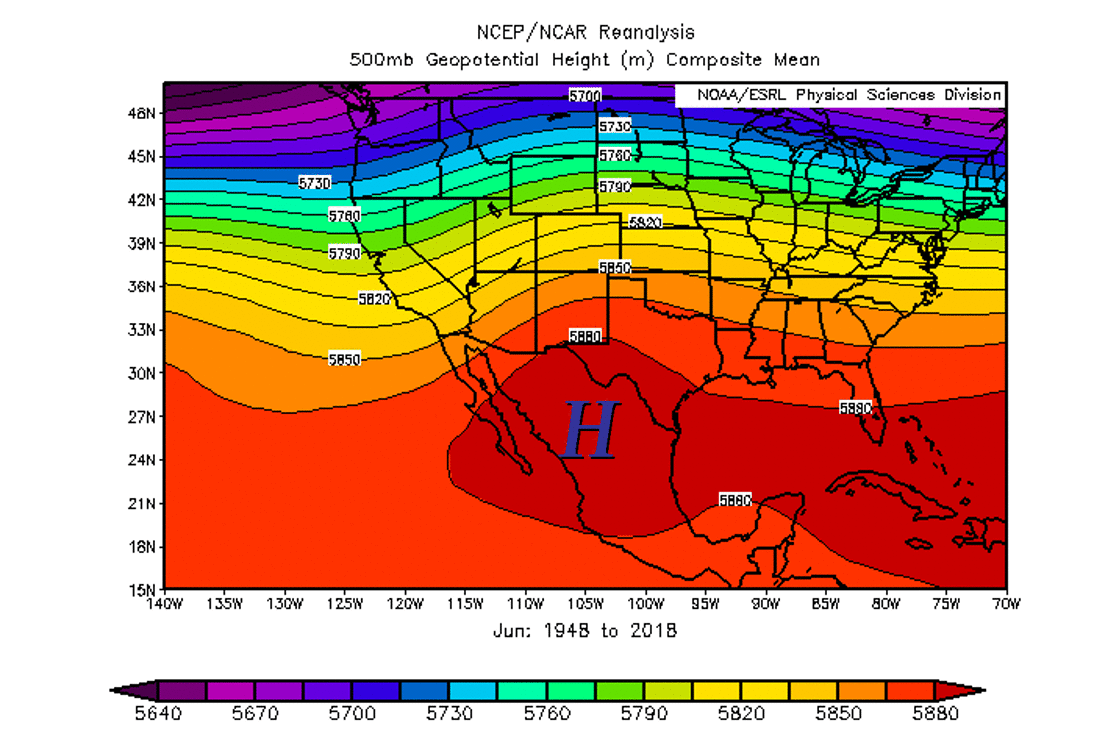
the due north movement of the subtropical ridge during July and August before it returns south again during September.
The strength and position of the subtropical ridge changes throughout monsoon season and plays an important function in the location and coverage of thunderstorms. This is why we run into fluctuations in rainfall across the surface area from day to solar day. I positive trigger for rainfall during the monsoon season in northern Arizona is the high height surface area known as the Mogollon Rim. This land feature acts as a trigger for showers and thunderstorms on most days during the monsoon season.
In about years, the monsoon season begins to air current downwardly across northern Arizona in September. In that location tends to be longer breaks between the rounds of showers and thunderstorms. This is because the temper is non as warm and the weakened subtropical ridge has begun to shift due south again. Nonetheless, this period tin be where we see our most astringent weather with cooler Pacific Body of water troughs combining with lingering monsoonal moisture.
Is Every Monsoon Flavour Similar?
No, each monsoon season is unlike in almost every aspect from the onset/finish, to the amount of available wet and to the location of the heaviest rainfall. Precipitation totals vary widely each monsoon flavour and within each flavor, amounts alter quite dramatically from city to city. The reason for this is the widely scattered nature of the monsoonal thunderstorms. Figures ii and 3 below illustrate this concept well with the differences in precipitation between the two cities. As an example, during the 2013 monsoon season, Flagstaff recorded well in a higher place normal monsoon season full precipitation, while Prescott was almost two inches beneath normal.
Importance Of The Monsoon Season To Northern Arizona
The value of water across the American Southwest is well documented. Each monsoon season is viewed as a way to refill reservoirs and h2o supplies across the region. Twoscore to fifty percent of the annual precipitation falls during monsoon season. This is especially important to the many farmers and ranchers around northern Arizona who depend on this water to make a living.
Some other aspect of monsoon flavour is the influence on the local burn conditions season. The fire weather flavor in northern Arizona peaks near the end of June; equally this is commonly the warmest and driest menstruum of the twelvemonth. The commencement of the monsoon season continues the threat of fires as burn down starts from dry lightning are mutual. However, afterward one to two weeks of widespread rainfall throughout early to mid July, the fire threat is greatly reduced during near years.
Let's take a look at how much rain normally falls across northern Arizona during the monsoon season. Amounts vary widely from yr to year at any particular location due to the scattered nature of the monsoonal showers and thunderstorms. Even more monsoon rainfall statistics for Flagstaff.
| Normal Monsoon Rainfall (June 15th-September 30th) | ||||
| Location | Rainfall (Inches) | |||
|---|---|---|---|---|
| Alpine | 11.xiv | |||
| Bagdad | 5.10 | |||
| Betatakin | 4.00 | |||
| Blue Ridge Ranger Station | 8.24 | |||
| Bright Angel Ranger Station | 6.64 | |||
| Canyon De Chelly NM | iii.37 | |||
| Cottonwood (Tuzigoot NM) | 5.21 | |||
| Flagstaff Airport | seven.68 | |||
| Heber (Black Mesa RS) | seven.80 | |||
| Jerome | seven.26 | |||
| Lee's Ferry | iii.17 | |||
| McNary | 10.92 | |||
| Montezuma Castle | five.27 | |||
| Page | ii.03 | |||
| Payson | seven.09 | |||
| Petrified Wood | four.46 | |||
| Phantom Ranch | three.49 | |||
| Prescott (City) | vii.28 | |||
| Prescott Airport | 5.86 | |||
| Saint Johns | 5.sixteen | |||
| Seligman | 5.36 | |||
| Prove Low Airport | 7.03 | |||
| Snowflake | 5.44 | |||
| Springerville | 7.17 | |||
| Sunset Crater NM | 8.00 | |||
| Walnut Coulee NM | vii.72 | |||
| Winslow Airport | 3.00 | |||
| Wupatki NM | 4.thirteen | |||
| Flagstaff | ||||
| Wettest | Driest | |||
| 1. | 20.00" (1986) | ane. | i.78" (2020) | |
| 2. | fifteen.70" (2013) | 2. | 2.08" (2019) | |
| 3. | 13.95" (1904) | 3. | two.31" (1978) | |
| 4. | 13.16" (1983) | iv. | two.87" (2009) | |
| five. | 12.73" (2014) | 5. | 2.94" (1991) | |
| 6. | 12.65" (1911) | 6. | three.12" (1973) | |
| vii. | 12.21" (1990) | 7. | 3.22" (1957) | |
| 8. | 11.99" (1998) | eight. | three.33" (1979) | |
| 9. | eleven.99" (1919) | 9. | three.80" (1942) | |
| x. | 11.61" (1927) | 10. | 3.84" (1944) | |
| Prescott (Urban center) | ||||
| Wettest | Driest | |||
| 1. | 18.23" (2014) | ane. | 2.27" (2020) | |
| 2. | 17.84" (1983) | ii. | 2.29" (1900) | |
| 3. | 16.40" (1984) | 3. | 2.68" (1978) | |
| 4. | 14.93" (1971) | four. | 2.94" (1928) | |
| 5. | thirteen.75" (1958) | 5. | three.19" (1979) | |
| half dozen. | 13.64" (1927) | half-dozen. | iii.23" (1993) | |
| 7. | 13.61" (1970) | 7. | 3.25" (1944) | |
| 8. | xiii.42" (2021) | 8. | iii.53" (1968) | |
| 9. | 13.34" (2016) | ix. | 4.12" (1980) | |
| 10. | 12.95" (1999) | 10. | four.17" (2011) | |
| Payson | ||||
| Wettest | Driest | |||
| i. | fourteen.74" (2021) | 1. | 2.90" (1979) | |
| 2. | fourteen.51" (1970) | 2. | three.02" (1991) | |
| iii. | xiii.58" (1963) | 3. | three.51" (1960) | |
| four. | 12.52" (1984) | 4. | 3.54" (1978) | |
| 5. | 12.51" (2004) | five. | 3.61" (2020) | |
| 6. | 12.51" (1951) | half-dozen. | 4.55" (1993) | |
| 7. | 12.30" (1954) | 7. | 4.62" (2015) | |
| eight. | 12.13" (1999) | 8. | 4.67" (1997) | |
| 9. | 12.01" (1990) | ix. | 4.72" (1995) | |
| 10. | xi.84" (2013) | 10. | 5.08" (1962) | |
Monsoon Awareness Week Videos
Monsoon 101
Lightning
Wink Flooding
Downbursts
Hiking Safety
Camping Safety
Debris Flows
Boating
Blowing Dust
How To Stay Safe During Monsoon Season
Northern Arizona offers a broad variety of outdoor recreation including hiking, mountain biking, slot canyons, swimming holes, and the M Canyon. Withal, Monsoon flavor provides dangerous threats to these activities with about daily showers and thunderstorms across the area. Here are some of our primal tips for staying prophylactic during the summer months:
- The all-time communication is to simply stay informed of the latest forecasts and warnings around the region
- Know how you will receive a alarm if there is one, that could be via your jail cell telephone, social media, or a Weather Radio
- Be sure to locate the nearest shelter to where you will be recreating
- Pack a safety kit for use if in that location is a weather condition emergency
- Heat is withal an event, especially in locations that don't receive an afternoon shower or thunderstorm
- Limit outdoor activity
- Drink plenty of water
- Wear light clothing
- Try to programme your outdoor activities either early in the morning or belatedly in the evening
- Lightning poses a serious threat to outdoor activities
- No outside location is safe when thunderstorms are virtually
- Safe locations include a substanstial building or inside an enclosed metal-topped car
- The biggest threat in northern Arizona during the Monsoon season is flash flooding
- NEVER drive through inundation waters
- 12 inches of water can sweep a auto off the roadway
- About flood fatalities happen in vehicles
In that location is enough of fun to be had in northern Arizona from mid June-late September, merely be smart and always prepare for what hazards Monsoon season can bring!
Monsoon Prophylactic Graphics
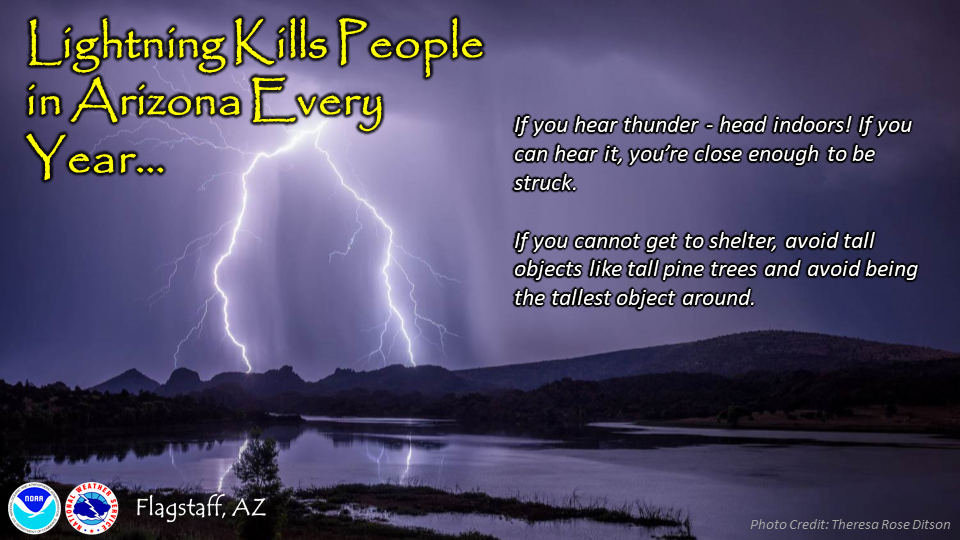
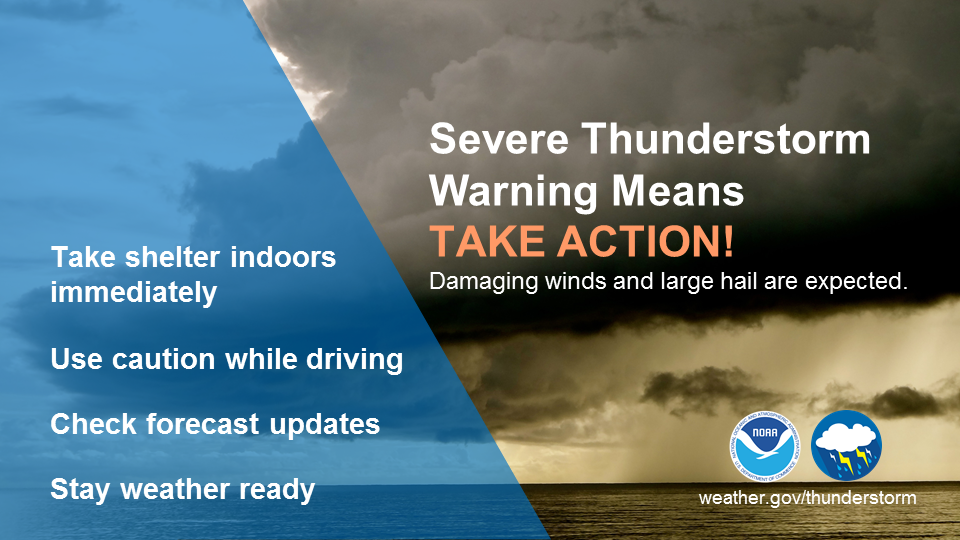
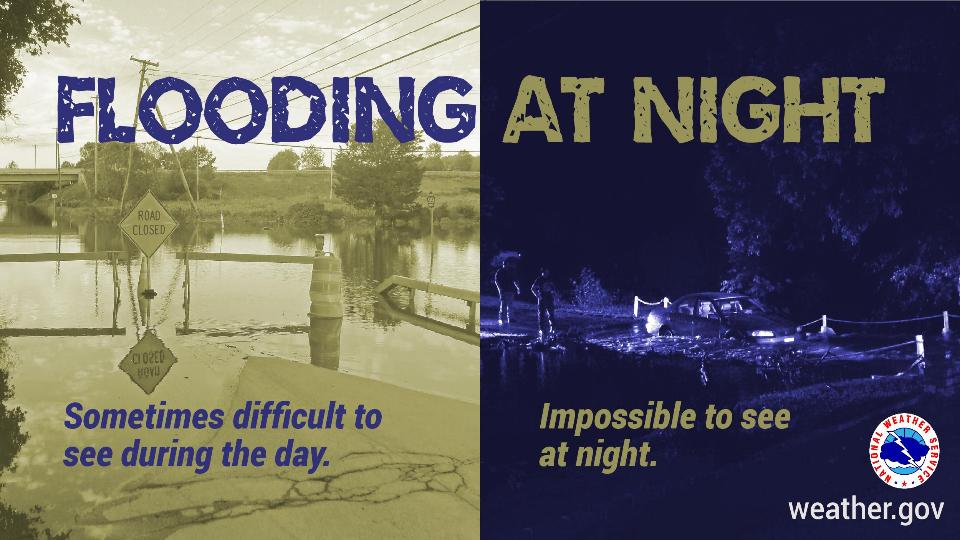
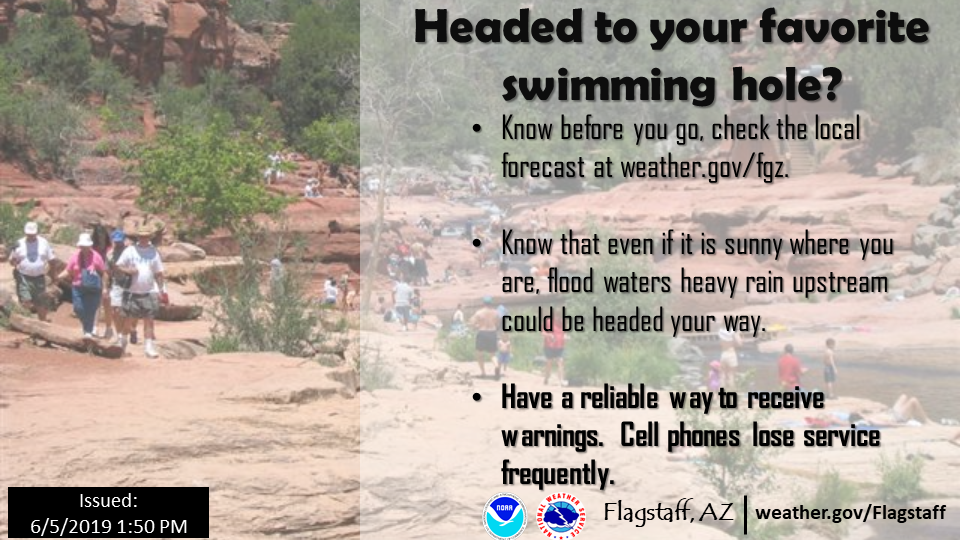
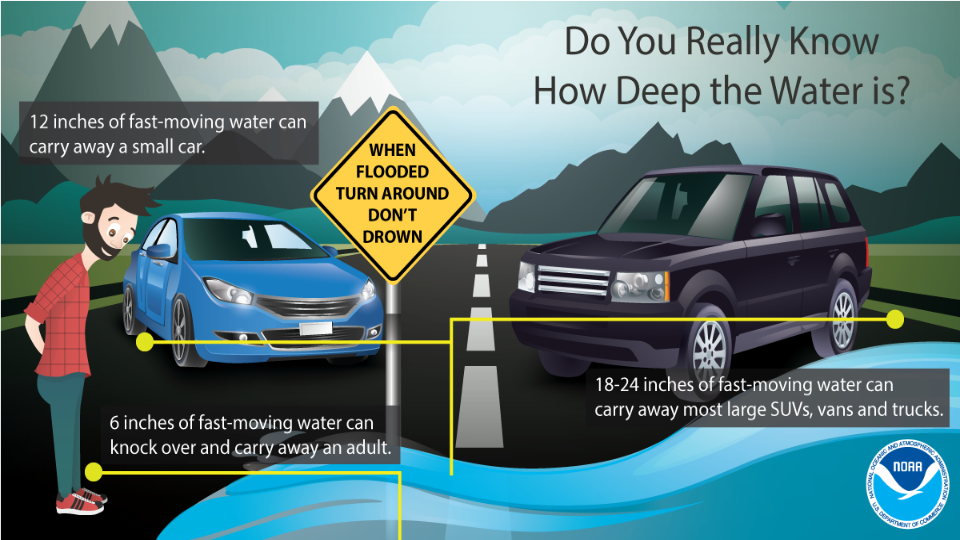
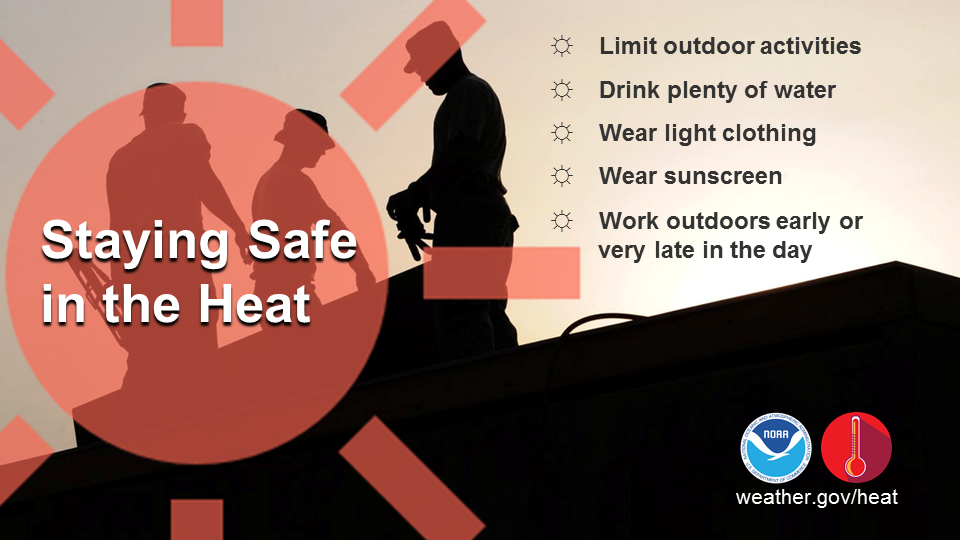
2021 Arizona Monsoon Outlook
Climate Prediction Center Outlook Graphics
Electric current 3 Calendar month Temperature Outlook

Current 3 Month Precipitation Outlook

Extended Three Month Temperature Outlook

Extended Three Calendar month Precipitation Outlook

Source: https://www.weather.gov/fgz/Monsoon
0 Response to "what to expect in arizona during monsoon season"
Post a Comment